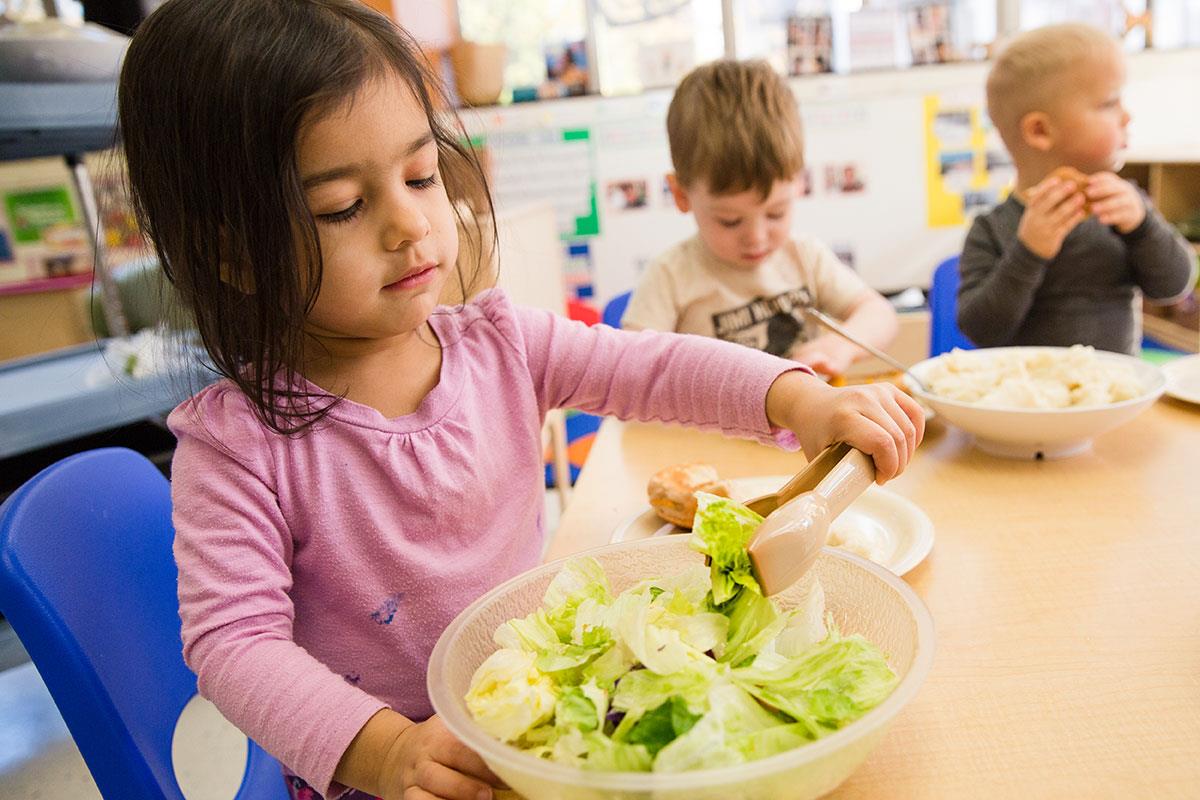Wholesome, Homemade First Foods: Make Your Own Infant Cereal!

If you have a wee one who will soon be ready* for her first bites of real food, you’ve probably heard that cereals are a great go-to for starter snacks. Typically made from rice, oatmeal, or barley, these easily digestible, vitamin-fortified cereals are simply finely-ground grains that you mix with water, formula, or breastmilk. While buying the packaged versions may seem more convenient, whipping up your own infant cereals is actually super quick and easy (we’re talking a matter of minutes), and the cost comes out to mere pennies per serving.
The trick is thoroughly grinding up your grains in a blender or food processor before cooking them. Sure, you can also purée a batch after the cooking process, but that can lead to a pasty or gummy texture that’s decidedly unappealing, even for babies. Note: You do need to cook homemade infant cereals, as they are made from raw whole grains. Packaged versions are typically made from refined grains (to make them more shelf-stable), and have been cooked and then dehydrated, which is why you can just mix them with liquid and call it a day.
Grinding and cooking times may vary, but here’s a great basic process to get your cereal-making adventure started!
HOMEMADE WHOLE-GRAIN CEREAL FOR INFANTS
Yields: 2–4 servings
Total time: Approximately 11–13 minutes
INGREDIENTS
- ½ cup uncooked old-fashioned oats, short-grain brown rice, or barley
- Water
- Optional: Spice, like cinnamon or nutmeg
INSTRUCTIONS
- Place your grain of choice in a blender or food processor and process until very finely ground. Store the powder in a sealed container in the refrigerator, freezer, or in a cool, dark place for up to 3 months.
- To prepare a serving, bring 1 cup of water to a boil in a small sauce pan and then add ¼ cup of your powdered cereal, whisking constantly until combined. If desired, sprinkle in a little spice and stir.
- Let the cereal simmer for 8–10 minutes, whisking frequently, until it’s thick and creamy. If the mixture is too thick, make it thinner by adding a little water, formula, or breastmilk.
- Allow the cereal to cool a little before serving. If it cools completely, it can get solid and gelatinous—if this occurs, simply thin with liquid before serving. Throw away any leftovers in his bowl once he’s had his fill, as the process of eating transfers bacteria from your baby’s mouth to the food via the spoon. Refrigerate any untouched, prepared cereal in an airtight container for up to three days or freeze for up to three months—thaw overnight in the refrigerator when ready to eat.
Inside tips: Whole grains provide fiber, protein, and lots of vitamins for little growing bodies. That said, they don’t come fortified with extra iron like many packaged versions, so chat with your doctor to make sure all of your baby’s dietary needs are being met. When baby is ready to graduate to food combinations, homemade infant cereals work great mixed with puréed fruit (especially apples, peaches, and bananas), veggies, meat, and plain whole-fat yogurt.
In our centers, we embrace family-style eating—encouraging children to serve themselves teaches them important social skills (like passing items, sharing, being patient, saying “please” and “thank you”) and how to listen to their own hunger cues. Allowing the Pre-K set to get in on the serving action can also inspire them to try new foods. Of course, babies aren’t even ready to feed themselves, let alone dish up their own plate of cereal—but watching you and her siblings engage in the serve-yourself process will give your newest addition to the family a jump on learning good habits. Sitting down to a family meal in general reaps heaps of benefits for children over time (think healthier eating habits, better vocabulary, and stronger self-esteem), so pull that high chair up to the table and have everyone dig in together!
*Check with your doctor before serving cereals or any other foods to your baby. Most little ones take their first bites between four to six months, but regardless of age, she should be able to sit in a high chair and have good head control. The standard advice is to start with single-ingredient purées—wait three days before introducing another food to confirm your baby isn’t experiencing an allergic reaction such as a rash, diarrhea, or vomiting. Never add salt or sweeteners to your baby’s food.




